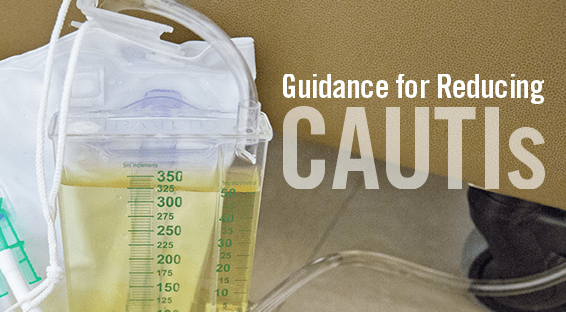Urinary tract infections (UTIs) are among the most common hospital-acquired infections (HAIs), and studies show that 70% to 80% are attributable to an indwelling urethral catheter. To help clinicians implement and prioritize efforts to prevent catheter-associated UTI (CAUTI) in the hospital setting, the Society for Healthcare Epidemiology of America, the Infectious Diseases Society of America, and other partners updated their recommended strategies to prevent CAUTI in acute care hospitals and published this information in Infection Control and Hospital Epidemiology. The update is the first since 2008 and is part of a compendium of strategies to prevent HAIs in acute care hospitals released by these organizations.
Important Guidance
“It’s important for healthcare providers to know the evidence-based best practices regarding insertion of urethral catheters,” says Lisa Maragakis, MD, MPH who co-authored the updated recommendations. “These include ensuring good hand hygiene, using aseptic technique so infections aren’t introduced at the time of insertion, and using standard methods for determining whether a patient truly needs a catheter. Clinicians should also articulate a clear rationale for ordering urinalysis or a urine culture due to true suspicions of an infection so that over-diagnosis and overtreatment with antibiotics can be avoided.”
Formal processes for reviewing the ongoing needs of patients with indwelling urethral catheters are also paramount. “It’s an unfortunate truth that in the complex world of hospitalized patient care that invasive devices like catheters may be overlooked within a patient’s overall care,” says Dr. Maragakis. “Every day, healthcare provider teams should ask themselves whether a catheter can be removed. Data show that risk for infections increases the longer a catheter is in place. Catheters should be discontinued as early as possible to avoid further complications.”
According to Dr. Maragakis, formal education programs are crucial for helping front-line providers understand the importance of CAUTI as well as their role in preventing and managing these infections. “Their clinical care decisions can impact infection rates,” she says. “Making sure all providers are aware of the infection rates in their unit is a powerful intervention that allows them to know if a problem exists. If problems occur, providers can take action and link clinical care to interventions to address specific outcomes.”
Implementing Recommendations
Dr. Maragakis urges providers who care for patients with urethral catheters and other invasive devices to keep the compendium readily accessible so that the interventions recommended within it are top of mind. “On a daily basis, it’s our responsibility as clinicians to adhere to these evidence-based best practices,” she says. “They should be incorporated into our routines in order to keep patients safe and provide the best, evidence-based care.”



 Janine Anthes
Janine Anthes